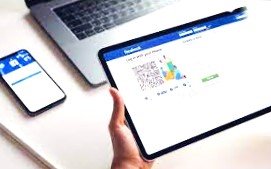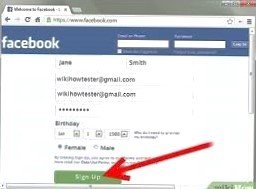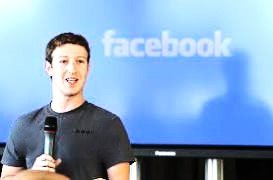Table of Contents
Toggle


- Did controversy surround Facebook right from the beginning, and what were the accusations faced by Mark Zuckerberg just a week after its 2004 launch?
- How did the genesis of TheFacebook in 2003 contribute to forging connections, and what role did Mark Zuckerberg play in its development?
- What were the coding ambitions that transformed TheFacebook from an idea into the digital realm, and how did it shape the platform’s trajectory?
- Can you elaborate on the rapid traction experienced by TheFacebook, detailing its swift ascent and the factors contributing to its quick success?
- What controversies were unveiled during TheFacebook’s early days, particularly concerning allegations and legal challenges faced by Mark Zuckerberg?
- How did TheFacebook expand beyond Harvard, and what strategies did it employ for global outreach beyond its initial campus origins?
- What significant events transpired during the incorporation of TheFacebook and the leadership transition that followed?
- Can you provide insights into Facebook’s name change and its early expansions during the years 2005-2006?
- What developments marked the introduction of Facebook’s business pages and the establishment of international headquarters from 2007 to 2008?
- How did Facebook experience growth and navigate changes during the period from 2010 to 2012, and what were the key milestones in this phase?
- What innovative features and new ventures characterized Facebook’s evolution from 2012 to 2014, and how did these contribute to its overall development?
- Could you outline the timeline of Facebook’s IPO journey in 2012, highlighting key events and milestones during this significant phase of its history?
The Complete Story of Facebook's Founding
Originally known as “thefacebook.com,” the website experienced immediate success. Fast forward six years, and it has evolved into one of the largest platforms globally, drawing in 400 million monthly visitors.

Controversy surrounded Facebook from the outset. A mere week after its 2004 launch, Mark Zuckerberg faced accusations from three Harvard seniors who claimed he had stolen their idea.
The situation escalated into a comprehensive legal battle, with the Harvard seniors’ competing company alleging theft and fraud against Mark and Facebook. This legal saga continues to unfold.
Recent findings from Silicon Alley Insider shed light on the legitimacy of some accusations against Mark Zuckerberg. The report indicates that, in 2004, he may have improperly accessed private login data from Facebook’s servers to intrude into members’ personal email accounts—a clear violation of privacy. Additionally, it suggests Mark hacked into the rival company’s systems, altering user information to undermine the site’s functionality.
Genesis of TheFacebook: Forging Connections in 2003
In 2003, faced with the absence of comprehensive online facebooks at Harvard, Mark Zuckerberg initiated the creation of an innovative student directory, aiming to redefine social connections on campus.
Coding Ambitions: From Idea to Digital Realm
Embarking on coding endeavors in January 2004, Zuckerberg drew inspiration from a Facemash-related Crimson editorial. The goal was to construct a centralized platform linking individuals within the university. Collaborating with Harvard student Eduardo Saverin, each invested $1,000 in the ambitious project, officially launching as “TheFacebook” on February 4, 2004, at thefacebook.com.
Rapid Traction: TheFacebook's Swift Ascent
Zuckerberg’s vision gained immediate traction, witnessing a surge in registrations fueled by sharing the site on the Kirkland House online mailing list. Within 24 hours of its launch, TheFacebook amassed an impressive 1,200 to 1,500 registrants.
Controversy Unveiled: Allegations and Legal Challenges
Despite early success, controversy erupted just six days after the launch. Accused by three Harvard seniors of deceptive practices regarding their collaboration on HarvardConnection.com, Zuckerberg faced allegations of idea theft. Anticipating a Crimson investigation, he resorted to accessing Crimson members’ Harvard email accounts using TheFacebook.com, resulting in a lawsuit that was eventually settled.
Expansion Beyond Harvard: TheFacebook's Global Outreach
Initially exclusive to Harvard students, TheFacebook’s membership soared within the first month, encompassing over half the undergraduate population. Promotional efforts expanded with key contributors like Eduardo Saverin, Dustin Moskovitz, Andrew McCollum, and Chris Hughes. March 2004 marked TheFacebook’s expansion to Stanford, Columbia, and Yale, gradually incorporating a broader network of Ivy League institutions and Boston-area schools.
Incorporation and Leadership Transition
A significant milestone occurred in Summer 2004 with Facebook’s official incorporation. Entrepreneur Sean Parker, an informal advisor to Zuckerberg, assumed the role of president, guiding the company’s relocation to Palo Alto, California, in June 2004. This period signified a pivotal moment in Facebook’s evolution, propelling it toward becoming a global social media powerhouse.
Facebook's Name Change and Early Expansions (2005-2006)
.
In 2005, Facebook bought facebook.com for $200,000 and dropped ‘The’ from its name. The next year, it opened to high school students and then to the general public. By October 2005, Facebook expanded to 21 universities in the UK and worldwide. A high school version launched in September 2005, requiring invitations to join. Membership eligibility expanded to employees of companies like Apple and Microsoft. In December 2005, universities in Australia and New Zealand joined, bringing the network’s size to 2,000+ colleges and 25,000+ high schools across several countries. Facebook became open to everyone aged 13 and older on September 26, 2006.
Facebook's Business Pages and International Headquarters (2007-2008)
Late in 2007, Facebook had 100,000 business pages, transitioning from group pages to the planned concept of company pages. In October 2008, Facebook announced its international headquarters in Dublin, Ireland.
Facebook's Growth and Changes (2010-2012)
In 2010, Facebook encouraged users to be beta testers using a question-and-answer method and Facebook Engineering Puzzles.As of February 2011, Facebook had achieved the status of being the most extensive online photo hosting platform, anticipating the upload of 100 billion photos by the summer.In October 2011, more than 350 million users accessed Facebook through mobile phones, accounting for 33% of all Facebook traffic. On March 12, 2012, Yahoo! filed a patent infringement lawsuit against Facebook just before its initial public offering.
Facebook's Innovative Features and New Ventures (2012-2014)
In 2012, Facebook launched the App Center, an online mobile store with 500 apps, mostly games. On April 24, 2014, Facebook and Storyful introduced FB Newswire.Facebook’s Lightweight Apps and Cost-Free Text Version (Recent Developments)Beyond the main mobile app, Facebook created Facebook Lite, a data-efficient app. Additionally, Facebook Zero lets users access a text-only version for free on certain mobile networks.
Facebook's IPO Journey in 2012
Facebook announced its plan for an Initial Public Offering (IPO) on February 1, 2012, aiming to raise $5 billion. The company revealed it had 845 million monthly active users and received 2.7 billion likes and comments daily. After the IPO, Mark Zuckerberg would maintain a 22% ownership stake and 57% of voting shares.
The IPO priced shares at $38 each, valuing Facebook at $104 billion, making it the most significant valuation for a new public company at that time. Due to high demand, Facebook increased its share offering by 25% just one day before the IPO. This move raised $16 billion, positioning the IPO as the third-largest in U.S. history, surpassing major corporations like Amazon and Disney and valuing Zuckerberg’s stock at $19 billion. Despite skepticism from some, the IPO was seen as turning Facebook into a key investment, with some describing it as “the next great blue-chip.”
However, trading on May 18 faced delays due to NASDAQ’s technical issues. The stock barely stayed above the IPO price, with underwriters having to step in to support it. The day ended with the stock slightly above the initial offering price but fell significantly in the following week.
Controversy arose on May 22 when regulators started investigating if banks had shared IPO details improperly with select clients. This led to subpoenas and several lawsuits from investors, claiming significant losses attributed to the IPO’s handling.
Timeline:
The redirection of the term “Facebook timeline” leads to the exploration of significant events in the development and evolution of Facebook, a social media platform that has played a pivotal role in shaping online interactions. Mark Zuckerberg initiated the creation of Facebook in January 2004, collaborating with fellow co-founders to lay the foundation for this groundbreaking platform. The journey began with the launch of Facebook as an exclusive social network for Harvard on February 4, 2004, setting the stage for its gradual expansion.
In the ensuing months, pivotal events unfolded, such as the formation of Thefacebook.com LLC in partnership with Dustin Moskovitz and Eduardo Saverin on April 13, 2004. The infusion of financial support from Peter Thiel in June 2004 marked a turning point, providing Facebook with its initial investment of US$500,000. Subsequent developments included the incorporation of Facebook into a new company on July 29, 2004, with Sean Parker assuming the role of president.
As the platform expanded, innovations and challenges emerged. In August 2004, Zuckerberg launched Wirehog to compete with i2hub, a campus-only service. The legal landscape became more complex as ConnectU filed a lawsuit against Zuckerberg and other founders in September 2004. Despite legal hurdles, Facebook celebrated a milestone on December 30, 2004, as it reached one million registered users.
The year 2005 brought further expansion as Facebook extended its reach to UK universities in March and received a significant investment of $13 million from Accel Partners in May. The acquisition talks with Yahoo! in September and the launch of a high school version of the platform showcased Facebook’s dynamic evolution.
The timeline of Facebook’s journey continued with various product launches and acquisitions. Notable moments include the introduction of the News Feed in September 2006, the acquisition of FriendFeed in August 2009, and the unveiling of Facebook Credits in November 2008. The company’s valuation and international presence grew with Microsoft’s announcement of a 1.6% share purchase for $240 million in October 2007 and the establishment of Facebook’s international headquarters in Dublin, Ireland, in October 2008.
The narrative unfolds with the activation of the Facebook like button in February 2009, the acquisition of Instagram for $1 billion in April 2012, and the company’s historic initial public offering (IPO) in May 2012. As Facebook reached the milestone of one billion active users in October 2012, the platform continued to innovate with the launch of Facebook Graph Search in January 2013.
The journey encompasses numerous product launches, acquisitions, and strategic partnerships, reflecting Facebook’s commitment to adapting to the evolving digital landscape. The acquisition of WhatsApp for $19 billion in February 2014, the launch of Facebook Paper in January 2014, and the introduction of Trending Topics in the same month showcase the platform’s ongoing efforts to stay at the forefront of social media innovation.
Amidst the technological advancements and strategic decisions, Facebook faced controversies, legal challenges, and scrutiny over issues such as user privacy and real-name policies. The platform’s response to LGBTQ concerns in September 2014, the acquisition of Oculus VR in March 2014, and the creation of Internet.org to promote global internet access underscore Facebook’s multifaceted role in both the digital and social realms.
Mark Zuckerberg’s public engagements, including Q&A sessions and announcements, offer insights into the company’s vision and ongoing commitment to user experience. The narrative of Facebook’s timeline is a dynamic tapestry woven with a myriad of events, each contributing to the platform’s rich history and its impact on the way people connect and share in the digital age.
In January 2015, Facebook made significant moves, starting with the acquisition of Wit.ai, a Y Combinator startup focused on building a voice-activated interface API. Shortly after, on January 8, Facebook acquired QuickFire Networks, a company specializing in reducing video file sizes and upload times through a custom hardware and software platform.
On January 16, Facebook took a step towards openness by releasing the Torch library, featuring deep learning tools for machine learning. This included new code that significantly accelerated the training of convolutional neural networks. Later that month, on January 20, Facebook announced a commitment to reduce the visibility of hoaxes in its news feed, aiming to help readers critically assess potential misinformation.
Moving into March 2015, Facebook introduced a friend-to-friend payment service within its Messenger app on March 17. The company also made a series of announcements at the F8 conference, emphasizing its desire to be an integrated suite of apps with distinct roles. Notable developments included expanding the capabilities of Facebook Messenger, introducing real-time comments, and launching features like spherical video and Parse for the Internet of Things.
March 26 saw Facebook open sourcing its React Native framework for building native apps. At the end of March, Facebook launched Scrapbook, a feature allowing parents to create a presence for their young children on Facebook through photo tagging, evolving into their accounts when they reach the appropriate age.
In April 2015, Facebook launched the Hello Android app on April 22, providing caller information by matching phone numbers with Facebook profiles. On April 28, the company announced the shutdown of its friends’ data API, encouraging developers to migrate to the Graph API, thereby allowing more granular control of user data shared with apps.
May 2015 marked the launch of “Instant Articles” for Publishers, allowing selected articles to be displayed directly within Facebook’s app. This feature aimed to improve load times and user experience, with initial partners including BuzzFeed, the New York Times, and National Geographic.
Facebook continued to evolve its platform in subsequent months, adding support for GIFs in May 2015, enhancing features for business pages, and introducing live-streaming in August. The company also reached a significant milestone on August 27, 2015, announcing that it had achieved 1 billion users accessing its platform in a single day.
As the year progressed, Facebook implemented various changes to its news feed algorithm, combatting clickbait titles and introducing improvements to prioritize friends and family content. In December 2015, Facebook added a feature for booking rides through its messaging application, allowing users in the U.S. to summon Uber cars with a few taps.
These developments represent a snapshot of Facebook’s dynamic evolution in 2015, setting the stage for its ongoing transformation in the following years.
Conclusion:
Navigating through the labyrinth of innovation, legal battles, and rapid growth, Facebook’s journey from a college project to a global titan encapsulates the tumultuous path of tech entrepreneurship. From its controversial inception in a Harvard dorm room to its sprawling influence across the digital realm, Mark Zuckerberg’s brainchild has been both lauded for connecting the world and scrutinized for its origins and privacy practices. Through allegations of idea theft, expansive global outreach, leadership transitions, and the relentless pursuit of innovation, Facebook has continually evolved, marking significant milestones like its name change, international expansion, and monumental IPO in 2012. This saga highlights not just the challenges of scaling a groundbreaking idea but also the complex interplay between innovation, ethics, and the unyielding quest for global connectivity.

Prof. Mian Waqar Ahmad
Prof. Mian Waqar Ahmad, a dynamic force straddling the realms of academia and digital media. As a distinguished Lecturer in Information Sciences, he imparts knowledge within the academic sphere, igniting the minds of his students. Beyond the classroom, Prof. Mian Waqar Ahmad dons the hat of a seasoned blogger on Worldstan.com, where his insightful posts delve into the intricacies of information sciences. His digital footprint extends even further as a YouTuber, leveraging the platform to share his expertise and make complex concepts accessible to a global audience. Prof. Mian Waqar Ahmad’s journey embodies the fusion of traditional education and contemporary digital outreach, leaving an indelible mark on the evolving landscape of information sciences. Explore his world at Worldstan.com and witness the convergence of academia and the digital frontier.
